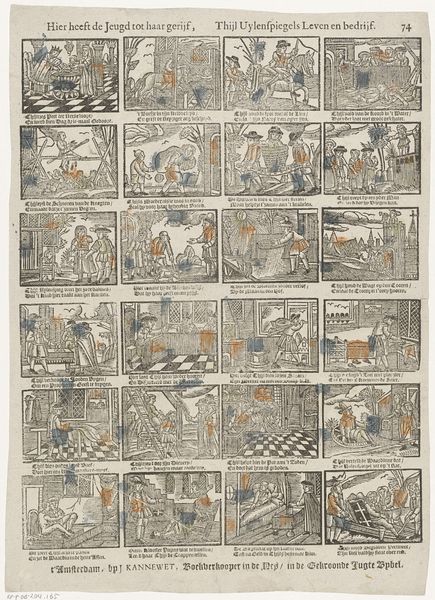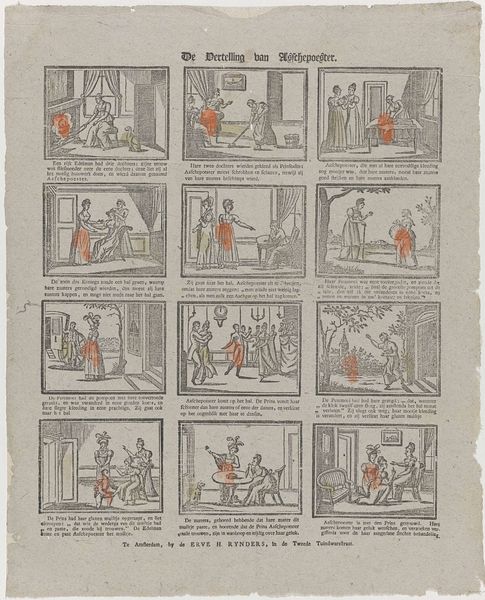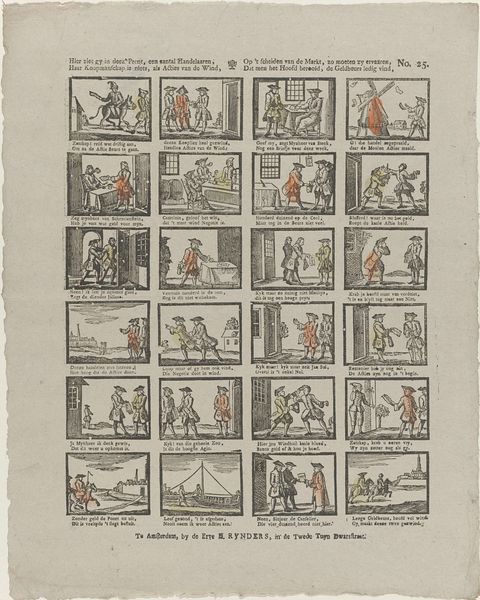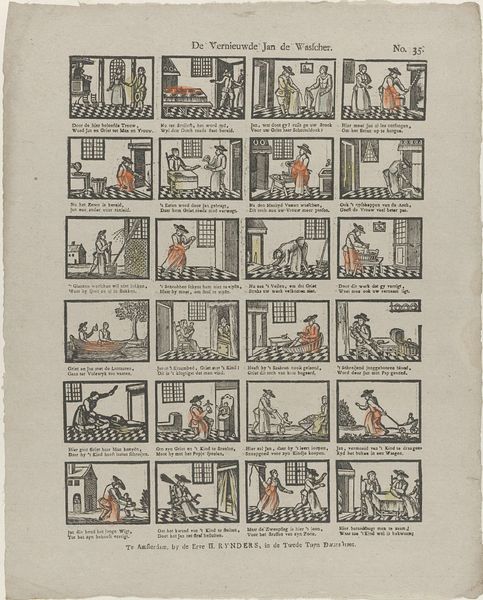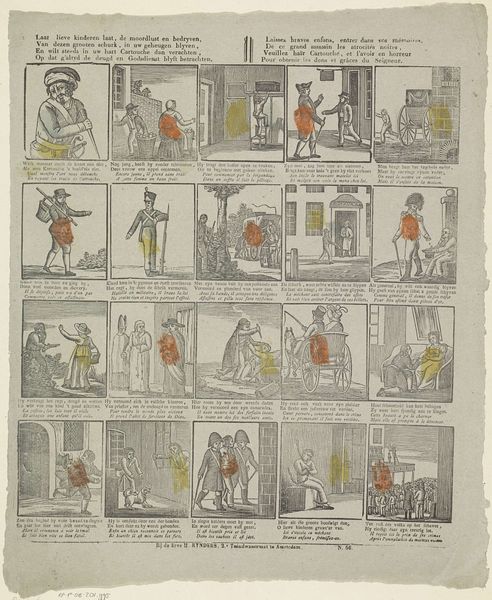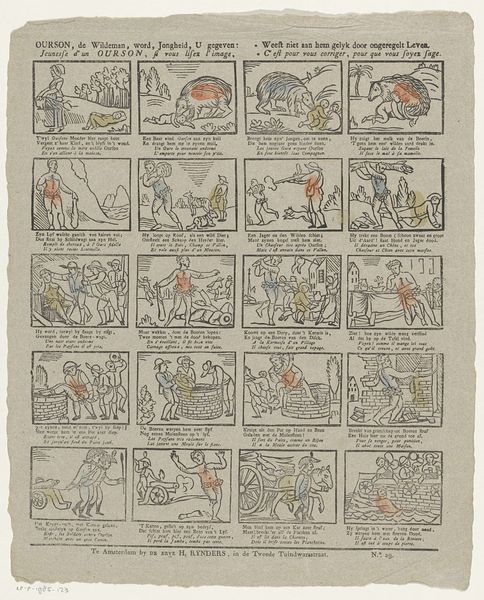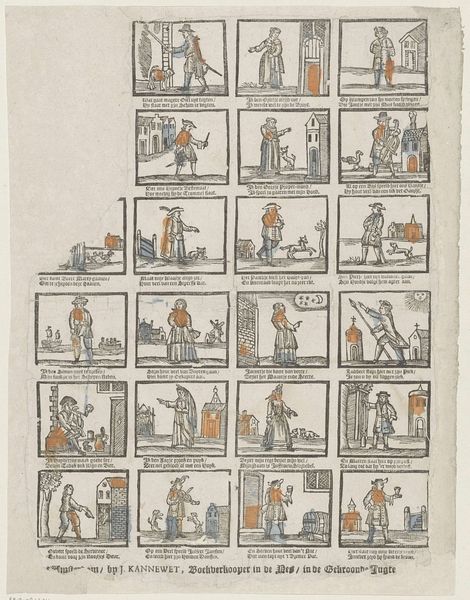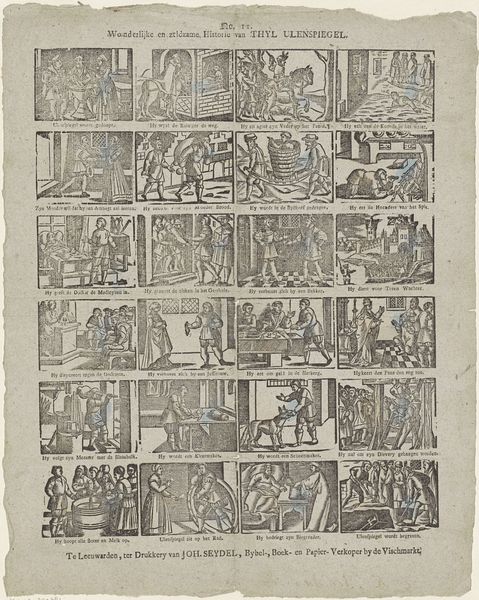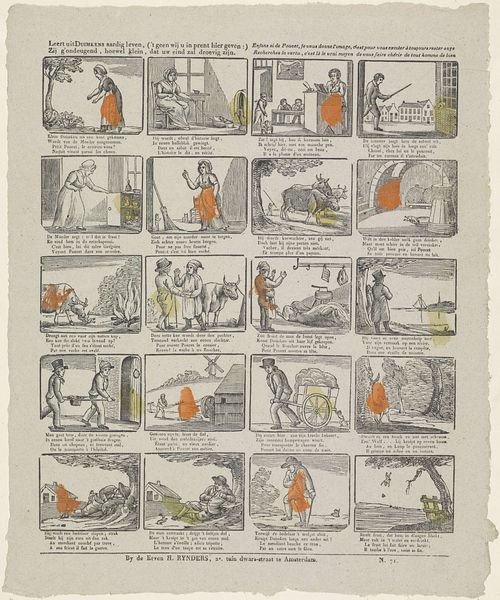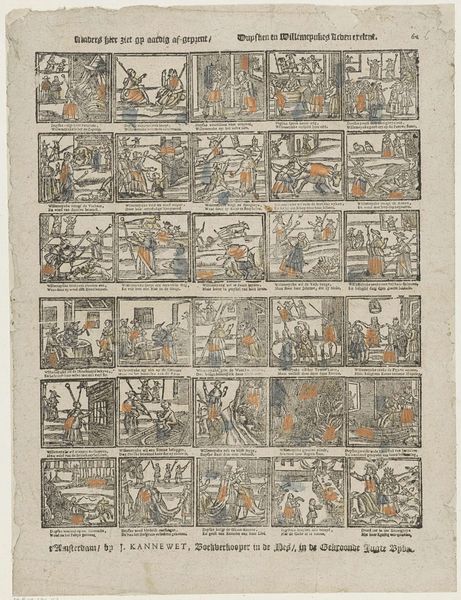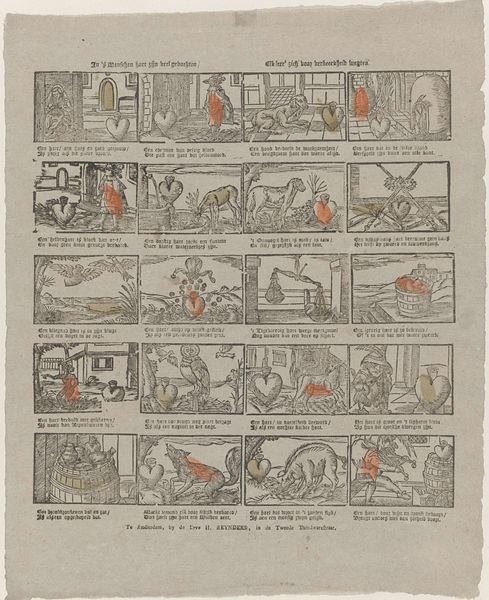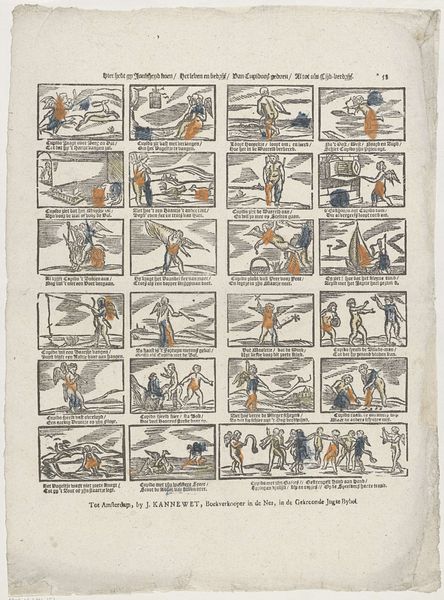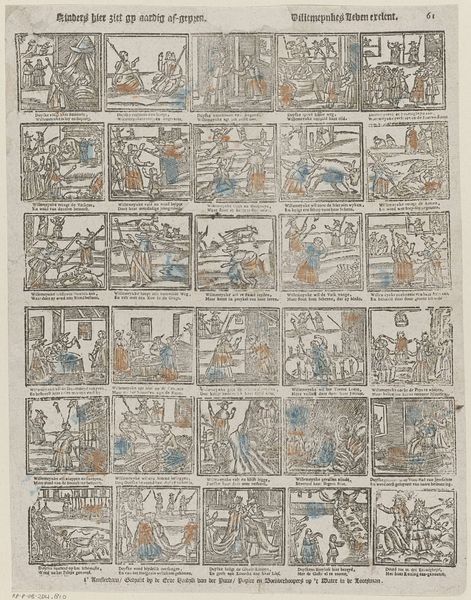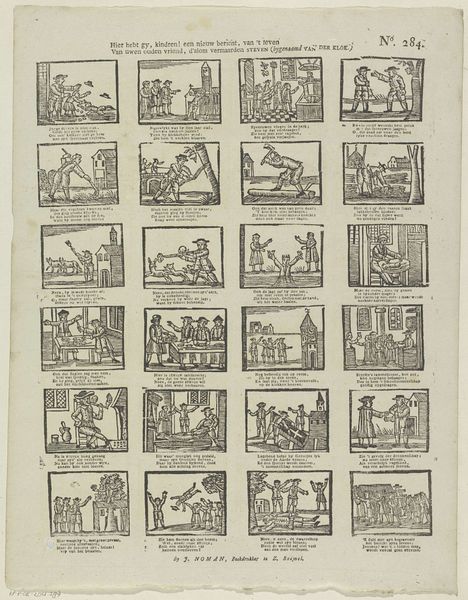
Het leven en snoot bedrijf, gevangenis en dood, van Cartousie tot Parijs 1725 - 1780
0:00
0:00
graphic-art, print, engraving
#
graphic-art
#
narrative-art
#
comic strip
#
baroque
# print
#
figuration
#
comic
#
line
#
genre-painting
#
engraving
Dimensions: height 425 mm, width 307 mm
Copyright: Rijks Museum: Open Domain
Curator: At first glance, it evokes the Bayeux Tapestry with its sequential storytelling, though executed in a drastically different style and scale. Editor: That’s perceptive. What we have here is a print by Johannes (II) Kannewet, likely made between 1725 and 1780. Its title, "Het leven en snoot bedrijf, gevangenis en dood, van Cartousie tot Parijs" translates to "The life and vile deeds, imprisonment and death, from Cartouche to Paris.” Curator: So it depicts the life, essentially a cautionary tale, of a famous outlaw or criminal. Is 'Cartouche' perhaps a symbolic name resonating in Parisian lore? Like a visual morality play, laid out in panels reminiscent of, say, medieval tapestries detailing a saint's life. Editor: Precisely. Louis Dominique Garthausen, known as Cartouche, was a notorious French highwayman. The imagery speaks to themes of social banditry, perhaps even the blurring of lines between hero and villain, depending on your social standing in 18th century France. Notice the engraver utilized vibrant blue and orange to make each vignette pop and the lettering adds additional details that shape how we interpret the criminal’s downfall. Curator: I can see recurring visual elements—swords, prisons, the figure of Cartouche himself—functioning almost like a coat of arms, shorthand representing his life journey. It's fascinating how printmaking allows the narrative and moral message to be distributed so widely, imprinting a visual memory of his fate on the culture. Editor: Exactly. By using a more democratic and available medium such as engraving, this morality play reaches the masses to re-inforce cultural narratives around class, deviance and law and order in 18th-century Paris. How is Cartouche perceived? Victim of society, social pariah, or someone to be feared? Curator: For me, this piece speaks of both power and its abuses. The small format actually magnifies the impact of the outlaw’s saga, shrinking a person into archetype through a series of stark visual episodes. Editor: It also provides a framework for how we construct and perpetuate these very human narratives through symbolism. It leaves you to wonder: what stories will future generations create? What symbols will dominate and take root in the collective memory?
Comments
No comments
Be the first to comment and join the conversation on the ultimate creative platform.
